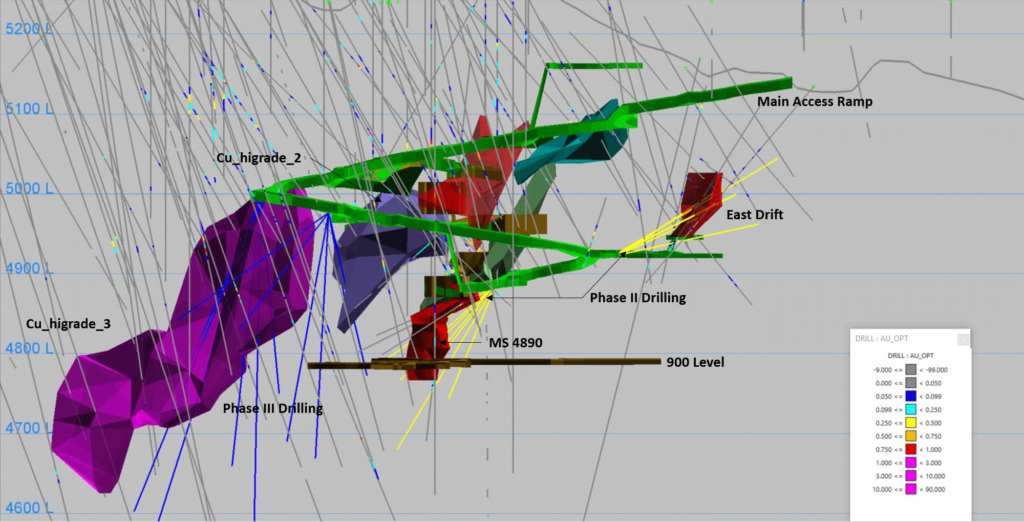Broadway Gold Mining has announced that it has completed a Maptek Vulcan 3D model of its Madison Project in the Butte-Anaconda region of Montana. Based on the positive results generated, Broadway is planning a new multi-phased underground diamond drilling program. The Phase II and III programs will target the expansion of known high-grade gold and copper massive sulphide and skarn zones of mineralisation. Previous Madison mine test stope production grades between 2005 – 2011, based on mill settlement statements of 13,242 t, average 25% copper and 17.8 g per tonne gold, which included a mill settlement of a bulk sample of 2,429 t of 35% copper and 1,372 t of 23 g per tonne gold.
Development of the Vulcan 3-D model utilised all available underground 2D mine working plans as well as underground and surface diamond-core drill results from 150 holes, incorporating 18,998 m of drilling. Phil Mulholland, Broadway’s chief geologist, supervised the modelling work. The follow-up multi-phase drill program is supported by the 3-D model. A Phase II drill program will evaluate two high grade gold zones: the “MS 4890,” a massive sulphide gold skarn; and, the “East Drift,” a zone of mixed massive sulphide and skarn. The Phase III drill program will target a third zone between the “Cu_higrade_2” and “Cu_higrade_3” zones, a copper-rich skarn.
The MS 4890 is a block of 2,177 t averaging 24.96 g per tonne gold and 1.10 % copper. The East Drift zone is defined by three holes: 86-6, 25.71 g per tonne Au over 7.3 m; 88-C9, 11.3 g per tonne Au over 8.8 m; and C06-13, 10.6 g per tonne Au over 12.2 m. Cu_higrade_2 is a zone of 86,767 t of 3.46% Cu; and, Cu_higrade_3 is a zone of 86,736 t of 2.61% Cu.
The company is currently budgeting a 670 m Phase II program consisting of 12 diamond drill holes from two underground stations. Seven core holes, representing 366 m, will be dedicated to the MS 4890 zone. Five core holes, approximately 305 m, will be dedicated to the East Drift. It is anticipated the MS 4890 drill results will extend that zone 100 vertical feet down dip, connecting mineralisation of the Madison mine to the adjacent Broadway mine’s 900 level. The Broadway Mine has produced 144,000 oz of gold at 0.32 oz/ton (11 g per tonne).
Upon completion of the Phase II program, a Mise-a-La–Masse geophysical survey will be used to map the geometry of the conductive massive sulphide body at depth. This approach was successful at Madison in 2017 when it was used to delineate the massive sulphide orebody at depth from surface. Mise-a-la-Masse is a geophysical method developed by Boliden AB to measure the conductivity and, thereby, the shape of a massive sulphide mineralised body. With improved understanding of the geometry and orientation of the known massive sulphide mineralization, the Company expects to improve targeting of future drilling.
“Mise-a-la-Masse is to drilling massive sulphide ore bodies as leapfrogging is to startup businesses,” said Thomas Smeenk, CEO. “Each underground massive sulphide zone can be shaped by its conductivity. That geometry and orientation enables the team to drill more statistically significant results.”











